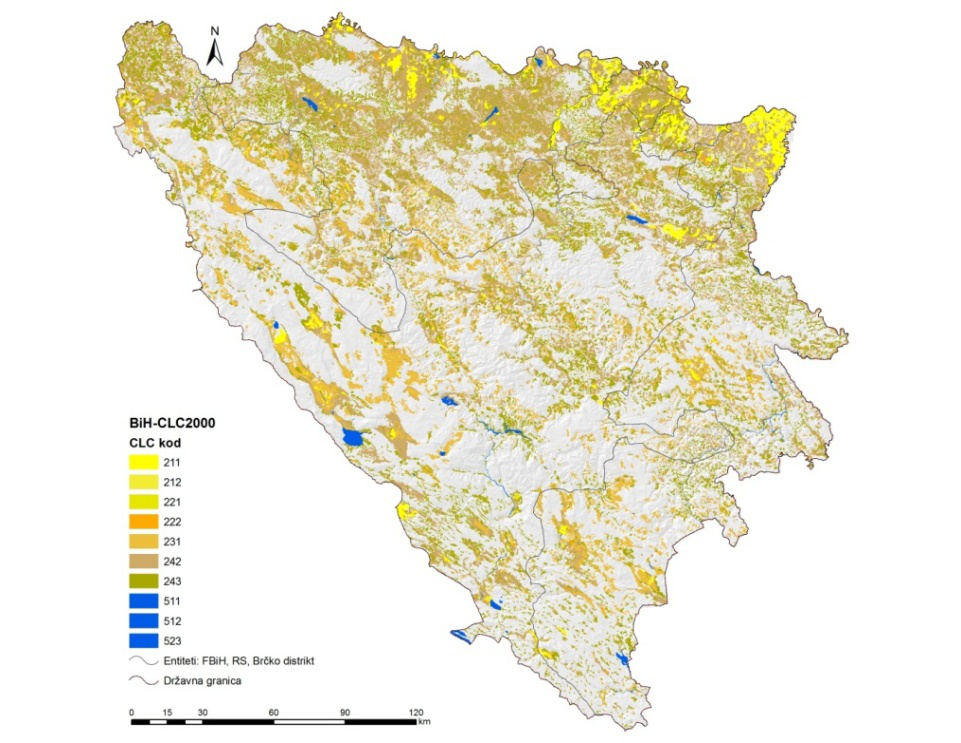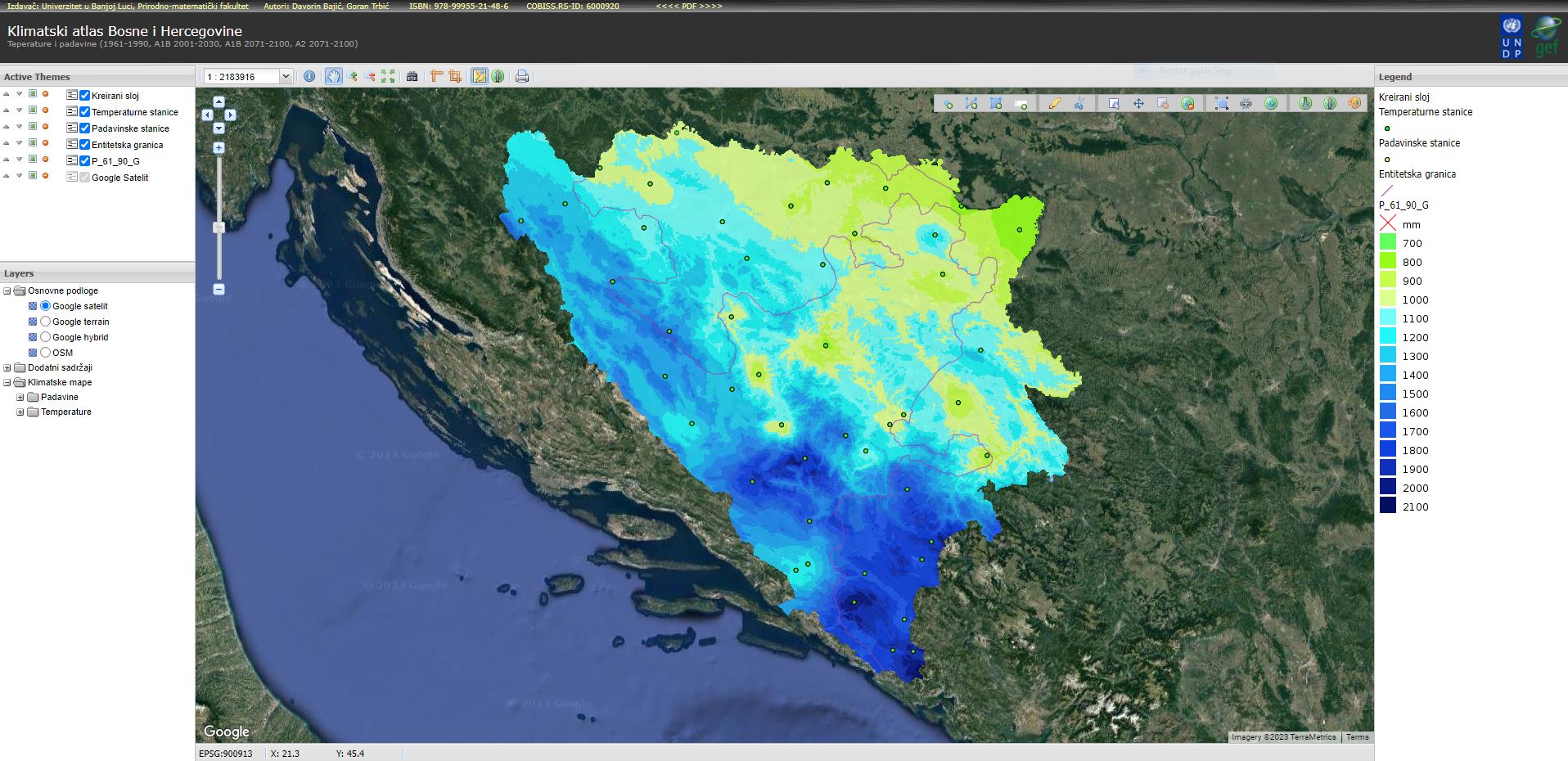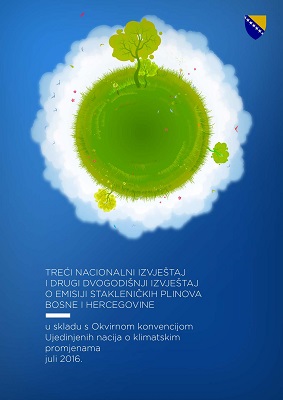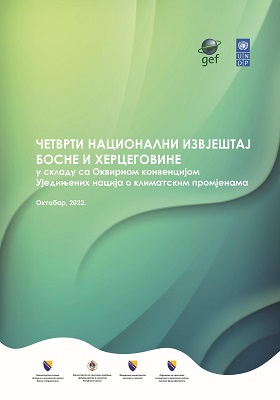Estimating the potential for mitigating climate change
The section on climate change mitigation focuses on sectors where the greatest potential for reduction of greenhouse gas emissions was identified: electricity generation, district heating, buildings, transport, waste management, agriculture, and forestry. Scenarios were developed for each of those sectors, modelling possible pathways of GHG emissions until 2025, along with proposed mitigation measures. Specific modelling involved a quantitative evaluation of time-series GHG emissions and considered three development scenarios: S1 – a baseline scenario (“business as usual”); and two mitigation scenarios. Scenario S2 assumed partial implementation of mitigation measures, and S3 – the advanced scenario -- assumed implementation of a comprehensive set of mitigation measures. Initial data considered in the three scenarios were taken from the year 2010, and calculations of greenhouse gas emissions were made in five-year increments: i.e., for 2015, 2020 and 2025.
- Scenario 1 (S1) assumes that greenhouse gas emissions shall increase proportionally to increases in energy consumption. Since greenhouse gases emissions are directly dependent on energy generation, this scenario assumes the same percentage of energy needs covered from domestic sources;
- Scenario 2 (S2) assumes the construction of generation plants in accordance with the relevant entity strategies and other data collected on planned activities;
- Scenario 3 (S3) assumes the intensive use of renewable energy sources (RES) and energy efficiency (EE) following the entry of BiH into the European Union Emissions Trading Scheme (EU ETS), which would require purchasing GHG emission allowances for the energy sector.
S1 and S2 assume that CO2 emissions from the BiH energy sector will increase in the period 2010–2025, as opposed to S3, which assumes a significant reduction (over 20%) of emissions with respect to 2010.
Three scenarios were developed for district heating sector, at the level of end-use energy consumption, and all three assume heating systems for remote city districts and an expansion of heating system networks:
- S1 assumes energy consumption without investments into new technologies and without the introduction of additional measures;
- S2 assumes energy consumption with EE measures to reduce consumption;
- S3 is an advanced scenario for energy consumption, assuming intensive economic development and investments into new technologies.
In view of the fact that the advanced scenario assumes intensive network expansion, it also entails an increase in emissions from this sector in 2025 of approximately 10% compared to 2010, whereas S2 assumes an approximate decrease of 5% by 2025.

Buildings are responsible for the highest share of end consumption of energy in Bosnia and Herzegovina. The age of buildings and their inadequate energy efficiency provide great potentials for savings, i.e. reductions in consumption of energy-generating fuels and reductions in CO2 emissions.
- S1 assumes a slight increase in GDP and energy consumption, entailing an increase in population size, construction of buildings and energy consumption, which would increase almost linearly, without energy efficiency measures;
- S2 assumes a moderately rapid increase in GDP and energy consumption without additional energy efficiency measures;
- S3 assumes a moderately rapid increase of GDP with implementation of energy efficiency measures that result in significant savings.
Emission reductions in the building sector are reflected in decreased and/or more efficient use of electricity and thermal energy.
The basis for the development of scenarios for the reduction of greenhouse gas emissions from the transport sector is found in the fact that road transport in BiH, compared to railway transport, is responsible for 90% of the total annual energy consumption (diesel and petrol) in this sector:
- S1 is based on previously established trends of an increasing number of motor vehicles at the average annual rate of approximately 5.8%, an average age of vehicles of between 12 and 15 years, no implementation of emission controls, and an average annual rate of increase in the consumption of diesel and petrol fuels by 3.7%;
- S2 assumes the introduction of additional technical measures for road motor vehicles supporting improved motor energy efficiency and reductions in fuel consumption; it assumes the same rate of increase in the number of motor vehicles as in S1, but with assumed improvements in the quality of fuels and in the quality of road infrastructure;
- S3 is based on the assumption that by 2025 BiH will become an EU member, implying the compulsory implementation of EU Directives regulating this field.
Scenario S1 envisages an increase in emissions from this sector of approximately 92%; S2 envisages an increase of 57% in the year 2025 compared to 2010, and scenario S3 envisages a reduction in emissions of approximately 8%.
The sink potential of BiH forest soil in 2010 was estimated at 7327.5 GgCO2.
- S1 is based on the established trend of reductions in forest areas that began in the post-war period, and it does not assume any additional measures intended to affect this trend;
- S2 is based on the implementation of certain measures intended to preserve existing afforested areas;
- S3 – the advanced scenario – is based on the assumption that by 2025 BiH will become EU member, implying the compulsory implementation of directives regulating the forestry sector.
According to the first scenario, S1, average annual sink capacity of BiH forests would be reduced by approximately 257 GgCO2 by 2025, while in S3 it would increase by approximately 285 GgCO2.
Potentials for climate change mitigation in the agriculture sector of BiH can be observed in two ways: 1) as sink potentials; and 2) as sources of greenhouse gas emissions.
- S1 is based on the trend of post-war reduction in arable land and land use change (most frequently into construction plots), and it does not entail any additional measures for land preservation.
- S2 assumes positive experiences and good production practices in the field of agriculture that are characteristic of economically developed, agricultural European countries.
- S3, as in other sectors, is based on the expectations that by 2025 BiH will become an EU member.
Based on these assumptions, S1 envisages that total greenhouse gas emissions in the agriculture sector will nearly double by 2025. S2 envisages a slight decrease; i.e., approximately 5% in 2025, compared to 2010. The S3 scenario shows that with strict implementation of the latest achievements in all segments of production, climate change mitigation potential in the agriculture sector of BiH is very large: a reduction of over 60% compared to 2010.
In view of the fact that the share of greenhouse gas emissions from the waste management sector at BiH level is approximately 3% of total emissions, its total direct impact on a reduction of GHG is not considerable. However, the reduction of waste, recycling, and energy generation from waste can have a significant impact on emission reductions in general.
- S1 is essentially based on the long-term continuation of existing practices in production and the organization of waste collection and disposal over the long run.
- S2 assumes the realization of goals and tasks defined in the BiH Solid Waste Management Strategy from the year 2000.
- S3 assumes the implementation of existing technical achievements and legislation applied in EU countries.
While the S1 scenario envisages a 15% increase in CO2 emissions from the waste management sector in the year 2025, the S3 scenario envisages a 20% decrease compared to 2010.






